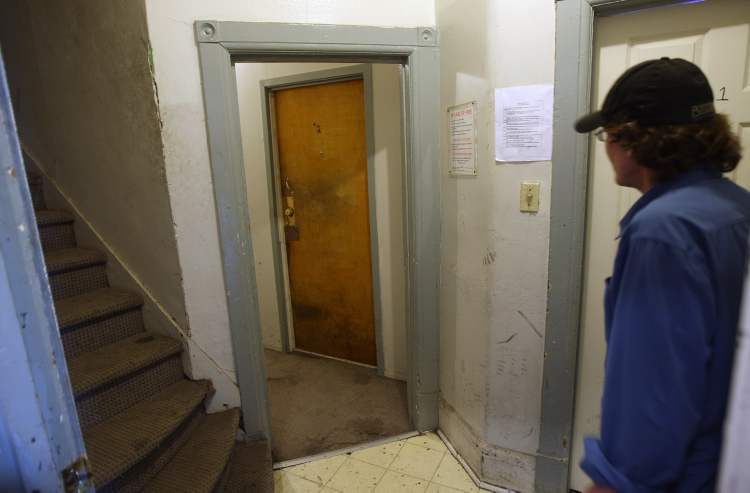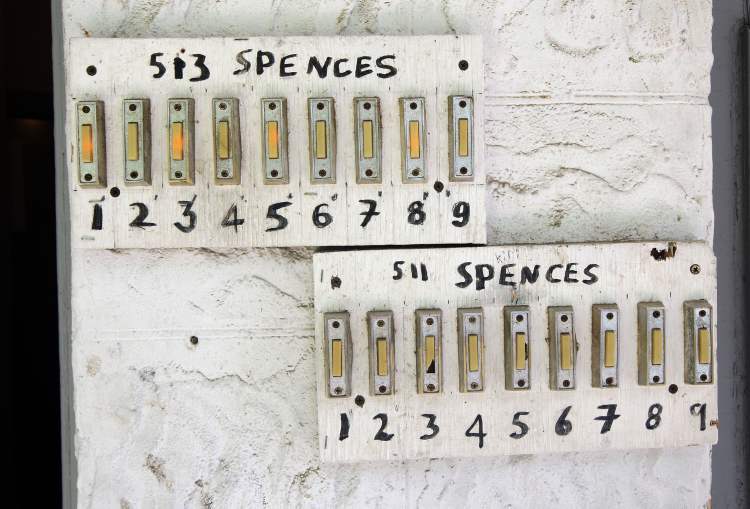Rooming-house loss a crisis
City's poor losing places to call home: advocates
Advertisement
Read this article for free:
or
Already have an account? Log in here »
To continue reading, please subscribe:
Monthly Digital Subscription
$1 per week for 24 weeks*
- Enjoy unlimited reading on winnipegfreepress.com
- Read the E-Edition, our digital replica newspaper
- Access News Break, our award-winning app
- Play interactive puzzles
*Billed as $4.00 plus GST every four weeks. After 24 weeks, price increases to the regular rate of $19.00 plus GST every four weeks. Offer available to new and qualified returning subscribers only. Cancel any time.
Monthly Digital Subscription
$4.75/week*
- Enjoy unlimited reading on winnipegfreepress.com
- Read the E-Edition, our digital replica newspaper
- Access News Break, our award-winning app
- Play interactive puzzles
*Billed as $19 plus GST every four weeks. Cancel any time.
To continue reading, please subscribe:
Add Winnipeg Free Press access to your Brandon Sun subscription for only
$1 for the first 4 weeks*
*$1 will be added to your next bill. After your 4 weeks access is complete your rate will increase by $0.00 a X percent off the regular rate.
Read unlimited articles for free today:
or
Already have an account? Log in here »
Hey there, time traveller!
This article was published 12/07/2013 (4467 days ago), so information in it may no longer be current.
There are 20 per cent fewer rooming houses in the Spence neighbourhood now than a decade ago.
That sounds like a good thing. Instead, inner-city activists say it’s a crisis.
Rooming houses are often demonized as overcrowded, filled with bedbugs, crime-ridden blights — the sprawling Balmoral Street house dubbed Murder Mansion is the most notorious example. There have been four homicides in five years there.

Despite their bad reputation, though, the dwindling number of rooming houses combined with the paucity of decent rentals for the very poor is the most pressing housing problem in the inner city.
New street-level research by the University of Winnipeg’s Institute of Urban Studies and the Spence Neighbourhood Association attaches rare numbers to the problem, one no government has been willing to quantify.
Researchers went door-to-door and counted 117 suspected and confirmed rooming houses in the small West End enclave. Those are old houses that have been carved up into many tiny bedrooms, where tenants share a kitchen, bathroom or both.
Spence likely has the most rooming houses in Winnipeg, so many that the total estimated square footage equals that of the Canadian Museum for Human Rights.
But the number is shrinking. A decade ago, the IUS did the same kind of census and counted 145 rooming houses in Spence.
“We know a number of landlords wanting to get out of the rooming-house business,” said SNA housing co-ordinator Isabel Jerez on a recent walkabout through the neighbourhood. “It’s not what they bargained for. They didn’t plan on being social workers.”
No one knows the number of rooming houses in the city. No government keeps track and many rooming houses fly under the radar of the rules.
According to a dozen inner-city experts who spoke to the Free Press in recent weeks, rooming houses and their residents slip through the cracks of nearly every government policy, welfare program and regulation.
The IUS pegs the number of rooming houses in Winnipeg at roughly 1,000, with perhaps 6,000 residents.
‘We know a number of landlords wanting to get out of the rooming-house business. It’s not what they bargained for’
— Spence Neighbourhood Association housing co-ordinator Isabel Jerez
In most cases, those 6,000 are the poor, the toughest-to-house, the most marginalized Winnipeggers. Some suffer from mental illness or addictions.
According to the new research, the typical rooming house in Spence is 110 years old, home to nine people who each have about 167 square feet to call their own. That’s a little bigger than a parking space.
If two-thirds of all rooming-house residents in Spence are on social assistance, that means the province is spending more than $2 million a year to keep them in some of the worst housing in the city.
The figures are startling, made more so by the fact they represent one small West End neighbourhood, roughly 25 blocks.
“It’s been 15 years and I’m still confounded by this issue, the enormity of it,” said Jino Distasio, director of the urban institute.
Distasio says the number of rooming houses in a neighbourhood is a volatile thing. Some close, others open, some get flipped, others operate under the table.
And, with increasing real estate values, it’s becoming more and more attractive for rooming-house owners to flip their big buildings into a triplex or a single-family home.
“In the longer term, we probably will see sort of a fading of rooming houses,” said Distasio. “The market’s gone up, they’re tougher to manage, there are different pressures than there were five, 10 years ago.”
And Distasio points to Osborne Village, once a hotbed of rooming houses, especially along streets such as McMillan Avenue.

Now, you’d be hard-pressed to spot one.
Though Spence has the largest number of rooming houses, West Broadway likely has the biggest concentration, and is the harbinger of gentrification.
“We’ve lost a ton of rooming houses, and what’s left are in such bad shape that their days are numbered,” said Greg MacPherson, executive director of the West Broadway Community Organization.
The agency has launched a pilot project to preserve and improve the remaining ones because once a rooming house gets sold and flipped, often a dozen or more affordable units are taken off the market, never to return.
maryagnes.welch@freepress.mb.ca
Spence neighbourhood rooming houses
Icons indicate approximate locations of rooming houses in Winnipeg's Spence neighbourhood. Click for more information on each one.
Source: Institute of urban Studies (UofW) and Spence Neighbourhood Association. Map by Wendy Sawatzky.
History
Updated on Friday, July 12, 2013 6:20 AM CDT: Replaces photos, adds map, adds sidebar
Updated on Friday, July 12, 2013 9:21 AM CDT: Clarifies that recommendations by Institute of Urban Studies were made ten years ago






